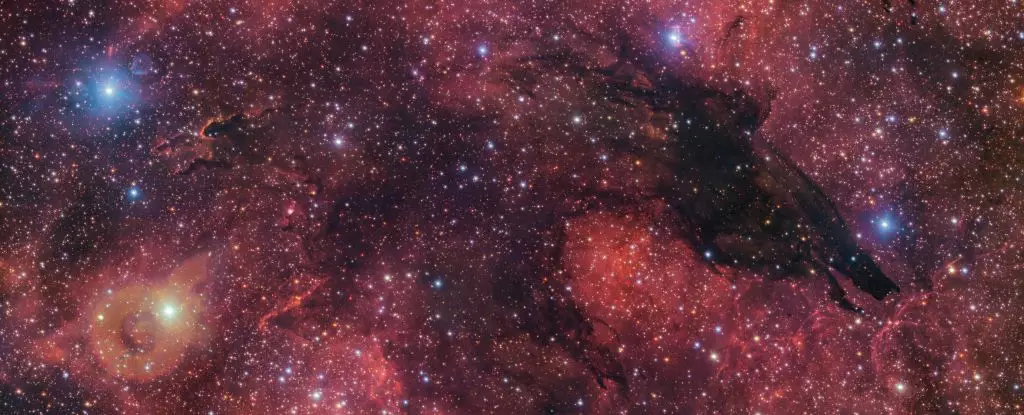The universe is a tapestry woven with tales of birth, death, and rebirth, where celestial bodies rise and fall in a magnificent cosmic dance. Among these narratives, the Dark Wolf Nebula stands as a remarkable example of how appearances can be deceiving. While it bears the ominous name of a ‘wolf’ that swallows light, it serves as a sanctuary for nascent stars, showcasing the remarkable processes of stellar formation hidden within the veil of darkness.
In Norse mythology, the prophetic tale of Ragnarök invokes images of the great wolf Sköll devouring the Sun, heralding an end of days and a cycle of destruction. In stark contrast, the Dark Wolf Nebula illustrates a different aspect of cosmic existence—one that is not about demise but about creation. Located approximately 5,300 light-years away from Earth, within the southern constellation of Scorpius, this nebula is a significant area of interest for astronomers and astrophysicists alike.
Contrary to its fearsome moniker, the Dark Wolf Nebula is a pillar of star formation, lying within a broader structure known as Gum 55. Here, amidst a backdrop of luminous nebulosity, the Dark Wolf is not an abyss but a dense cloud of gas and dust. It’s an environment rich with the ingredients essential for star birth—a stark reminder of how myths and stories often beguile us with their simplicity while the truth is infinitely more complex.
Dark nebulae—such as the Dark Wolf Nebula—are intriguing because they do not emit or reflect visible light. Instead, they absorb it, leading to the illusion of a vast cosmic void. However, this dense arrangement of matter is critical to the stellar lifecycle. The dust in these nebulae can efficiently emit infrared light, allowing astronomers to study them without relying on visible light, which is often obscured.
The transition of energy within these clouds signifies colder temperatures and higher density, conditions favorable for gravity to dominate. When gravitational forces become sufficiently strong, they compel the gas and dust to collapse into clumps. These clumps eventually gain enough mass to kickstart the process of nuclear fusion, the very mechanism that powers stars. As these protostars develop, they begin to expel energy through radiative processes, simultaneously dispersing the surrounding cloud—a clear demonstration of the cycle of stellar life.
To unlock the secrets of star formation within dark nebulae, scientists utilize advanced tools like the James Webb Space Telescope (JWST) that can visualize infrared wavelengths. This remarkable capability allows for a detailed examination of star-birth regions obscured by dense dust, paving the way for a more profound understanding of stellar genesis.
Studying the cosmos is akin to solving a grand puzzle, where each piece contributes to the larger picture of universal existence. Observations of the Dark Wolf Nebula across multiple wavelengths paint a comprehensive story of the dynamics at work in star formation. Visible light images, such as those taken by the VLT Survey Telescope, deliver essential information regarding the structure and distribution of materials within and around the nebula.
Documenting these details is not merely an academic exercise; it reinforces the ongoing cycle of creation and destruction as existing stars die, scattering their material and providing the building blocks for new stars. As with the mythological wolf of Norse lore, while one element may consume, another gives rise to new possibilities. This cyclical nature imbues our universe with profound depth and complexity.
The Dark Wolf Nebula encapsulates the enigmatic forces of creation hidden within the shadows of the universe. It serves as a testament to the wonders of astronomical study and the importance of looking beyond initial impressions. As we unravel these cosmic mysteries, we come to appreciate that the birth of stars, much like stories, arises from darkness and despair, only to emerge into the light—creating new worlds and new tales.
In exploring objects like the Dark Wolf Nebula, we not only learn about the universe but also reflect on our place within it. The great sky wolf of lore may consume the Sun, but it also nurtures the conditions necessary for life and the continued expansion of knowledge in the cosmos. The celestial wonders around us are bound in a dance of creation, destruction, and rebirth that humbles and inspires all who dare to gaze into the night sky.


Leave a Reply